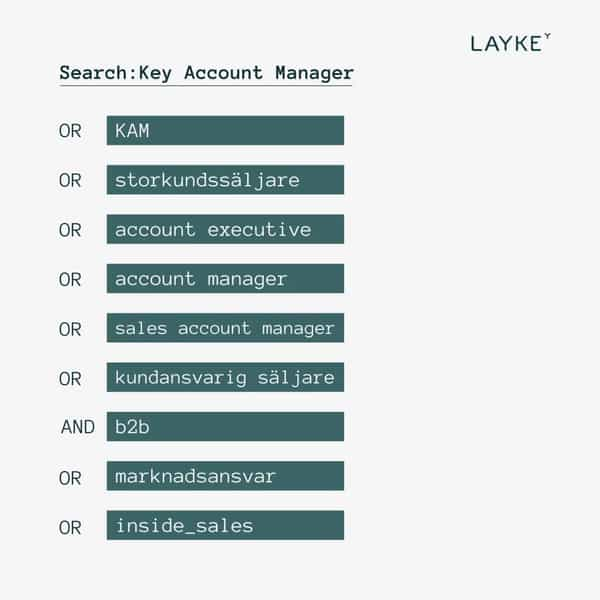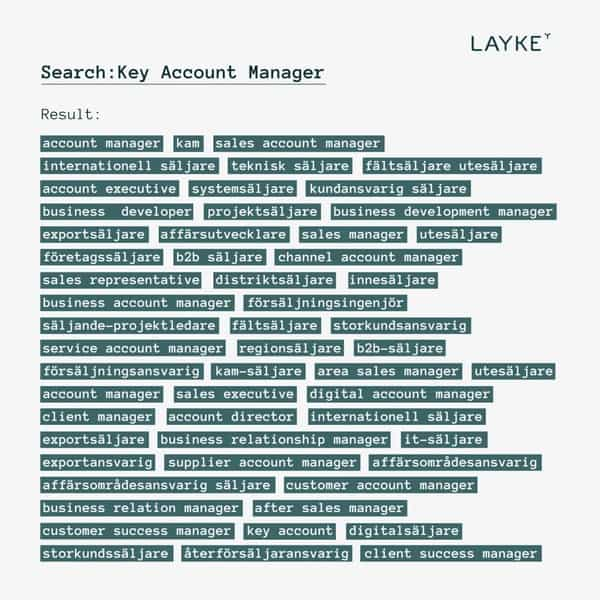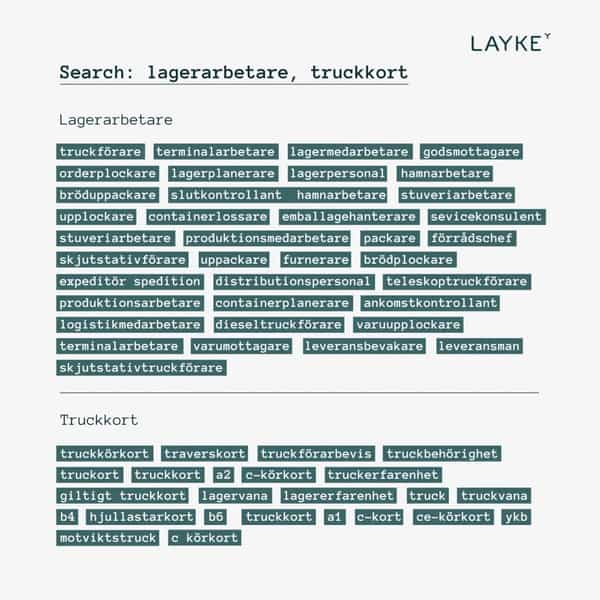Why database optimization is the key to finding relevant candidates
As a recruiter, you’ve probably encountered various methods used to identify relevant candidates directly from your database: boolean search, keyword search, and power search. What are they and how can they help you find the right candidates, you may wonder?
This article will help you get a better understanding of the differences between boolean search and power search. We will go through concrete examples showcasing how the search methods look and why you may risk missing out on relevant candidates while using a boolean search.
Why Boolean search is not enough when identifying talent
When looking to find relevant candidates in their databases for a specific role, it is common for recruiters to employ boolean searches or keyword searches. The boolean search is a method of identifying candidates in a database based on various criteria, using indicators such as “AND,” “OR,” and “NOT” to limit and define the search result.
To complete a boolean search, you must enter all of the essential synonyms and tags for each role or skill that a candidate may possess. It also implies that recruiters must be familiar with the wide range of relevant keywords and synonyms that a job may contain. The boolean search is at a disadvantage in this case, as you need to spend a lot of time and effort carrying out only one search query.
For instance, this is how a search for a Key Account Manager position can look:
("Key account manager" OR "kam" OR "storkundssäljare" OR "account executive" OR "account manager" OR "sales account manager" OR "kundansvarig säljare") AND ("b2b" OR "marknadsansvar", OR "inside_sales")
If you don’t enter “OR” indicators for terms linked to the searched role or omit one or several synonyms related to the wanted job or skill, there is a chance that you miss some relevant applicants. Moreover, the searches themselves end up being long and painful to construct.

Boolean search can also impact the hiring managers’ screening strategy. Because of the limited keyword-related searches, you may risk missing even more candidates who possess relevant skills that aren’t explicitly included in the resume.
For example, the boolean search may overlook candidates who have experience in SEO from a SaaS tool such as Ahrefs, if a recruiter is looking for an SEO professional with experience from Semrush (a similar SaaS tool). Although both platforms serve similar purposes, and although a candidate with experience in Semrush can learn Ahrefs, the boolean search is not capable of understanding the connection between the two terms.
Why Layke Search is the next step in identifying talent
Layke Search was created to assist recruiters in identifying suitable talent from their databases faster and more efficiently, without having to include all tags and terms for a wanted skill or job.
Layke Search is a smarter searching operator that uses a machine learning model to automatically expand the vocabulary of the search results and even identify other terms related to the desired jobs and skills.
When using Layke Search, you can enter only one term for the wanted role or skill, rather than all synonyms related to a specific position. An example of a search result for a Key Account Manager position will now look as follows:

It is also possible to make a combined search for the wanted roles and skills. For instance, you can search for a warehouse worker (lagerarbetare) with a truck driving license (truckkort) by inserting the two terms, and Layke Search will present all candidates with a combination of the two searched concepts:

What makes Layke Search’s technology different from boolean search
We developed Layke Search using the same machine learning model that is the basis of Layke Match, the candidate screening and matching algorithm. It is a language model that provides a measure of similarity between words and phrases.
The language model is designed to measure similarities and linkages between various role and skill terms and is trained on domain-specific data, primarily job advertisements.
Layke Power Search uses Natural Language Processing (NLP) – a branch of artificial intelligence that focuses on providing computers with the capacity to understand information from documents in the same manner that humans do. To do so, semantic and syntactic similarities are crucial in identifying all the relevant roles and skills to match a candidate with a job or vice versa.
So, what does this imply? Syntactic similarity describes the similarity between the literal order and wording of the words, while semantic similarity describes the similarity between their meanings.
Let’s take two related roles as an example. Semantically, “developer” and “programmer” are similar, the two words have similar meanings. Syntactically, they are different: the words are written differently.
“Teacher” and “preacher” are syntactically similar since they sound very much alike. They are semantically distinct, as they have different meanings.
Lastly, “teacher” and “teaching” are similar semantically and syntactically. The two words relate in both meaning and word structure. We trained Layke Search to provide semantic similarity between the words, focusing on the terms’ meanings.

The model can represent and understand all words as vectors positioned in a high-dimensional vector space to determine their meaning.
The distance between the words is decided by the range of [-1, 1] which describes how semantically similar the words are. 1 is obtained if the words are identical, in other words, if there is no distance between the word vectors. 0 is obtained if there is no correlation between the two terms. -1 is obtained when the words’ meanings are opposite.
You can think of the search model as a giant multi-dimensional map with two axes in the centre interconnecting all words from different angles. The more related a word is to the searched skill or role, the closer it is positioned on the axis.
You can also think of it as a word cloud, a collection of similar words that grow or shrink in size depending on their relationship to the searched role or skill.
Below is an illustration showing how Layke Search determines the level of similarity between each word in a dimensional map.
We searched for the role of “systems developer” (systemutvecklare), and Layke Search identified all the similar words. The search model also assigned each result a number based on how close the terms are to each other.
Result:
mjukvaruutvecklare 0.8767385482788086
applikationsutvecklare 0.8734666705131531
utvecklare 0.8620952367782593
webbutvecklare 0.8576995134353638
backend-utvecklare 0.8544082045555115
java-utvecklare 0.8541843891143799
frontend-utvecklare 0.8520445823669434
mjukvarutestare 0.8471370935440063
javautvecklare 0.8417056202888489
testare 0.8411400318145752
databasutvecklare 0.840848982334137
.net utvecklare 0.8402601480484009
c#-utvecklare 0.8397743105888367
frontendutvecklare 0.8345930576324463
systemutvecklare 0.8337545394897461
.net-utvecklare 0.8317484855651855
embeddedutvecklare 0.8290187120437622
embedded-utvecklare 0.8275262117385864
c++-utvecklare 0.8198301792144775
fullstack-utvecklare 0.8194013833999634

Example of a search in a multi-dimensional vector space
Conclusion
Boolean search relies on word-for-word searches and asks the recruiter to write all possible keywords related to a search. Due to its limited search features, the boolean search can reduce the chances of numerous candidates being found.
Layke Search uses artificial intelligence and machine learning technology to find the most relevant candidates from the recruiters’ database through one single search. The model understands the similarity between various skills and roles, which means that it isn’t dependent on the recruiters to write all possible versions of a job or skill.
 By
By


